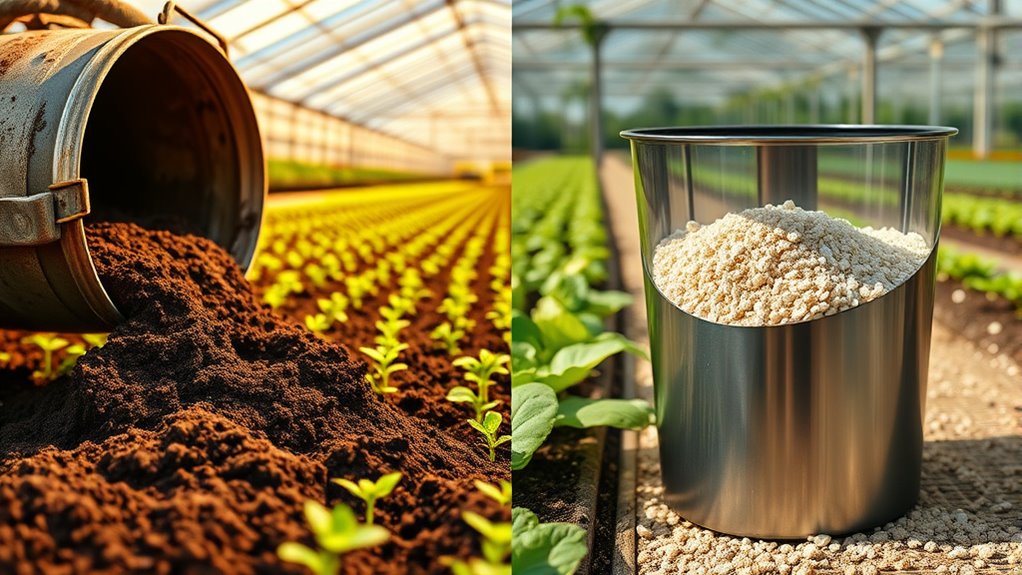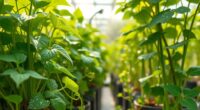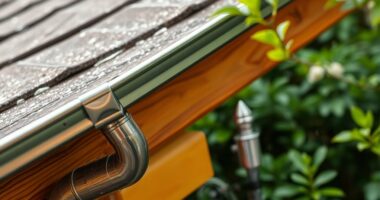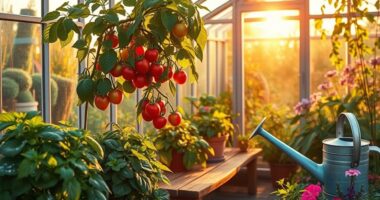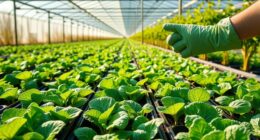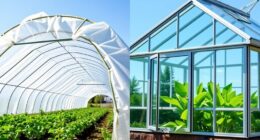When choosing between soil and soilless mixes for your greenhouse, consider your plants’ needs and your management style. Soil retains nutrients naturally, offers beneficial microbes, and buffers pH fluctuations, but it can hold pests and diseases. Soilless mixes drain well, allow precise nutrient control, and require regular fertilization, though they lack natural microbes. To make the best choice, explore the specific benefits and challenges of each option as you aim for healthy, thriving plants.
Key Takeaways
- Soil offers natural nutrient retention and microbial benefits but may require more management to prevent pests and nutrient imbalances.
- Soilless mixes provide superior drainage and precise nutrient control, ideal for rapid adjustments and reducing pest risks.
- Choose soil for ease of maintenance and buffering capacity; opt for soilless when frequent watering and tailored fertilization are preferred.
- Soil’s organic matter supports healthy root development and stable pH, while soilless media necessitate diligent fertilization routines.
- The decision depends on your experience level, plant needs, and management style for optimal greenhouse plant health.
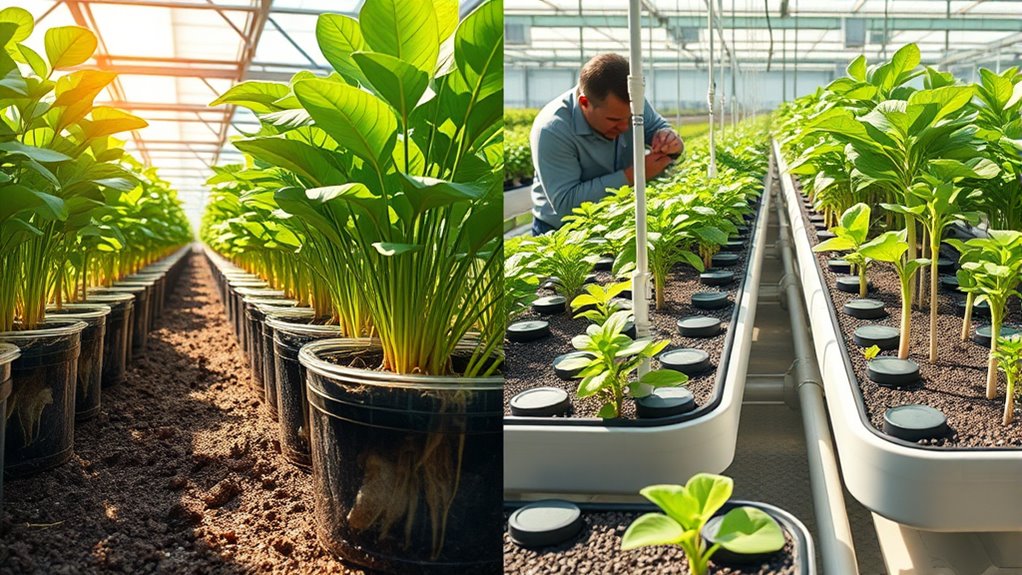
When choosing a growing method for your plants, understanding the differences between soil and soilless systems is essential. One of the biggest considerations is how each medium handles nutrient retention and water drainage. Soil naturally contains organic matter and minerals that help retain nutrients, making it an excellent source of nutrition for many plants. It acts like a sponge, holding onto nutrients and slowly releasing them as plants need. However, soil’s water drainage can vary depending on its composition. Heavy clay soils may retain too much water, leading to root rot, while sandy soils drain quickly, which might require more frequent watering and feeding. Knowing your soil type helps you manage these factors effectively. Additionally, soil can harbor pests and diseases if not properly managed, which can impact plant health.
Understanding soil’s nutrient retention and water drainage is key to successful plant growth.
In contrast, soilless mixes are designed to maximize water drainage and nutrient availability. These media often consist of peat moss, coconut coir, perlite, or vermiculite, which are engineered to prevent water from pooling around roots. This prevents overwatering and promotes healthy root development. Because soilless mixes drain well, they typically require more frequent watering, but their structure also makes it easier to control nutrient levels. You have more precision in feeding your plants, as you can supplement with tailored fertilizers that are quickly absorbed. This means you can prevent nutrient deficiencies more effectively than with soil, where nutrients may become locked in organic matter or leached away.
When it comes to nutrient retention, soil has an inherent advantage because of its organic composition. It can hold onto nutrients longer, providing a steady supply to plants over time. But this also means that if you don’t manage it properly, nutrients can build up and cause imbalances or salt buildup. With soilless mixes, nutrients are less likely to be locked away, but you need to fertilize more regularly to maintain ideal levels. This makes soilless systems more responsive but also requires diligent feeding schedules.
Another aspect to regard is how each system affects plant health. Soil’s natural properties can buffer pH fluctuations and provide beneficial microbes that support plant growth. Soilless mixes, lacking these microbes, depend more on your maintenance and fertilization routines. If you prefer a low-maintenance approach, soil might be easier to work with, especially if you’re familiar with managing its properties. If you want more control over water and nutrients, soilless systems give you that flexibility, though they demand more frequent attention. Furthermore, choosing the right growing medium based on your needs can significantly influence your gardening success.
Ultimately, your choice depends on your specific plants, growing conditions, and experience level. Both soil and soilless mixes have their strengths and challenges related to nutrient retention and water drainage. By understanding these core differences, you can select the right medium that ensures your plants thrive in your greenhouse environment.
Frequently Asked Questions
Which Mix Is Better for Organic Gardening?
When choosing a mix for organic gardening, you should prioritize natural ingredients like organic compost and natural fertilizers. These enrich the soil or soilless medium, promoting healthy plant growth without chemicals. A soil-based mix with organic compost provides nutrients and improves soil structure, while a soilless mix with organic amendments offers better control and reduces pests. Both options support organic principles, but your choice depends on your gardening setup and preferences.
How Do I Improve Drainage in My Potting Mix?
To improve drainage in your potting mix, start by adding coarse materials like perlite, pumice, or coarse sand to enhance water flow. This prevents water retention issues that can lead to root rot, while still maintaining enough moisture for healthy plants. Also, balance nutrients by incorporating organic matter such as compost, which helps retain necessary nutrients without compromising drainage. Regularly check your mix and adjust as needed for ideal plant health.
Can I Combine Soil and Soilless Mixes?
You can definitely combine soil and soilless mixes for container gardening, giving you more control over drainage and nutrient levels. Mixing them helps improve pest control since some soilless mixes are less prone to pests. Just guarantee you blend evenly to avoid compacting the mix, which can hinder drainage. This approach allows you to customize your potting mix for healthier plants and better growth in your greenhouse or container garden.
What Is the Cost Difference Between the Two?
Imagine your budget as a garden bed—what you plant depends on your resources. When comparing costs, soil mixes often come cheaper upfront, but may require more management. Soilless mixes usually cost more initially but can save money over time through better plant health. Your decision hinges on budget considerations and long-term goals, balancing affordability with quality to create a thriving greenhouse environment.
How Often Should I Replace My Potting Mix?
You should replace your potting mix every 1 to 2 years to maintain healthy plants. Over time, nutrients are depleted, and pests or diseases can develop, making fertilizer requirements higher and pest control methods less effective. Regularly check for mold or foul odors, and refresh the mix when you notice these signs. This helps guarantee your plants get the nutrients they need and stay protected from pests.
Conclusion
Choosing between soil and soilless mixes is like picking the right path in a garden maze—you need to know what suits your plants best. Soil offers a natural foundation, while soilless mixes give you control and cleanliness. Think of it as selecting the perfect pair of shoes for a journey—you’ll walk farther and feel more comfortable. Whichever you choose, remember that your green thumb can turn any path into a lush, thriving paradise.
